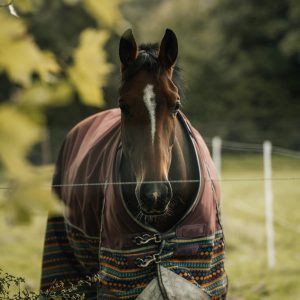What is pigeon fever?
Pigeon Fever (also known as Dryland Distemper) is a disease caused by the bacteria Corynebacterium pseudotuberculosis. Classic Pigeon Fever in California manifests a pectoral (chest) abscess – giving a “pigeon breasted” appearance, hence the name Pigeon Fever. It can also cause abscesses – both large and small – along the belly, sheath and mammaries and just about anywhere on the body. Rarely it causes “lymphangitis” in which it infects a leg causing swelling, lameness and small abscesses rupturing out along the leg. Also a rarity – approximately 1 – 2% of horses – can get internal abscesses in the abdomen or lungs.
Transmission
The bacteria enters the horse through traumatized skin usually on the belly (i.e., from bad fly bite sores). It can come from the ground or more commonly transmitted by flies carrying it and feeding at the sores. The bacteria enters the lymph system and are brought to the lymph nodes by white blood cells. The abscesses form in these lymph nodes. It is believed that the horse must have repeated exposure to the bacteria in order to get the disease, which is one reason why we commonly only see Pigeon Fever at the end of fly season, late summer and fall. It is not directly contagious unless pus is smeared on a horse with just the right amount of preexisting skin trauma to allow entry of the bacteria.
Control
Effective fly control is our best prevention. Once a horse has a draining abscess, it is good to reduce the spread of the bacteria around the soil of the farm by keeping him “sheltered in place.” The bacteria can remain in the environment – primarily soil – for as long as 8 months following contamination. If a horse has an actively draining abscess, throw any gauze or other material that is used for cleaning abscesses in a covered trash can, not on the ground. Keep Ichthammol applied liberally to the abscess area as this also helps repel flies. Having said this, most horses have been exposed by the time the first horse comes down with it.



